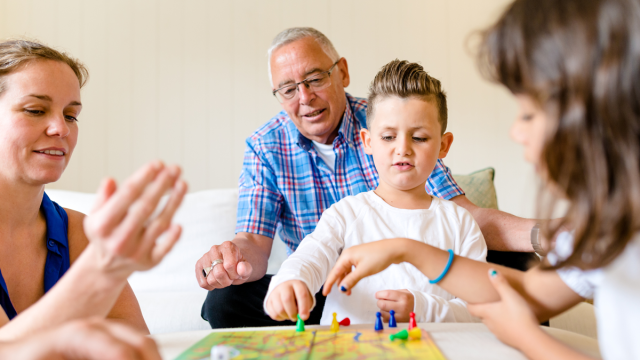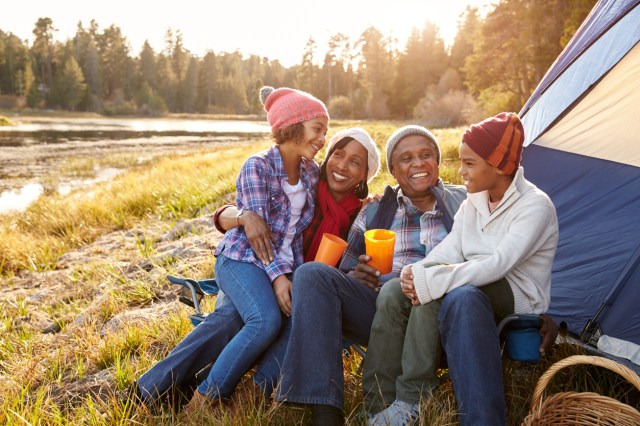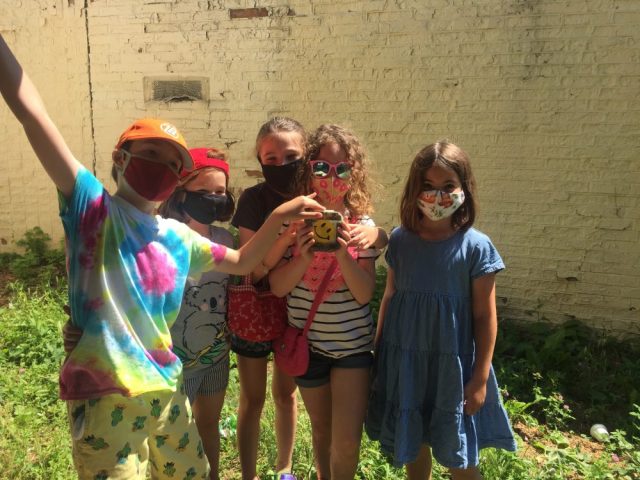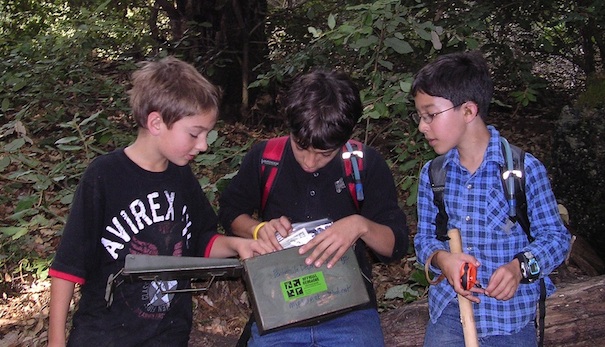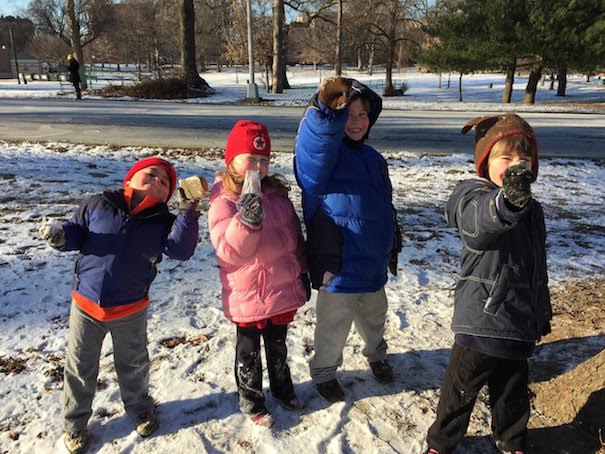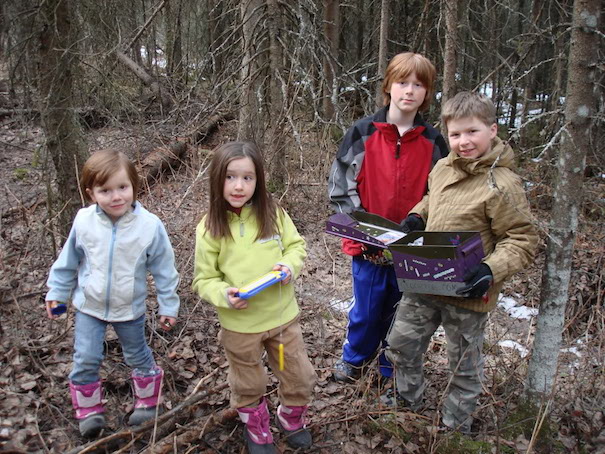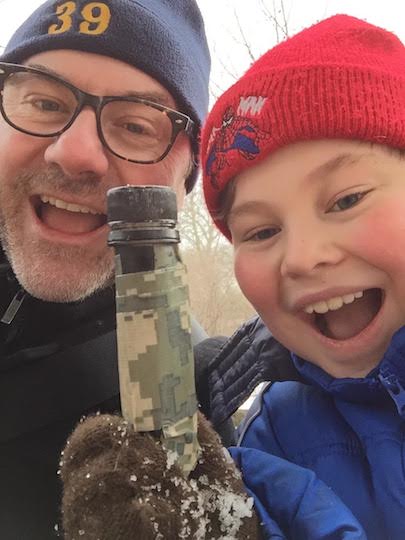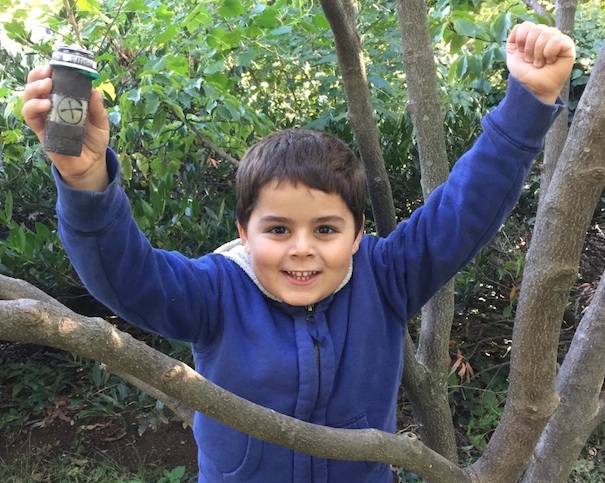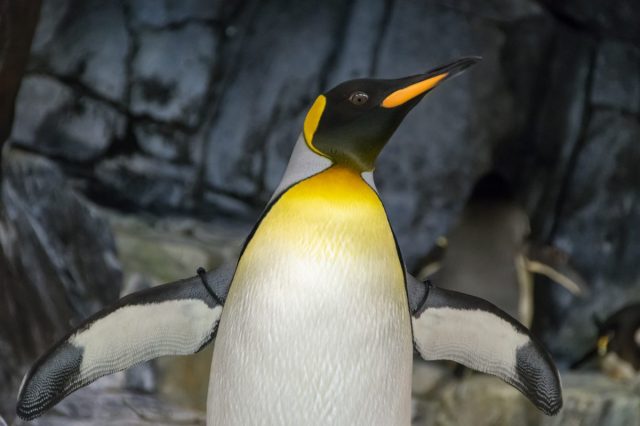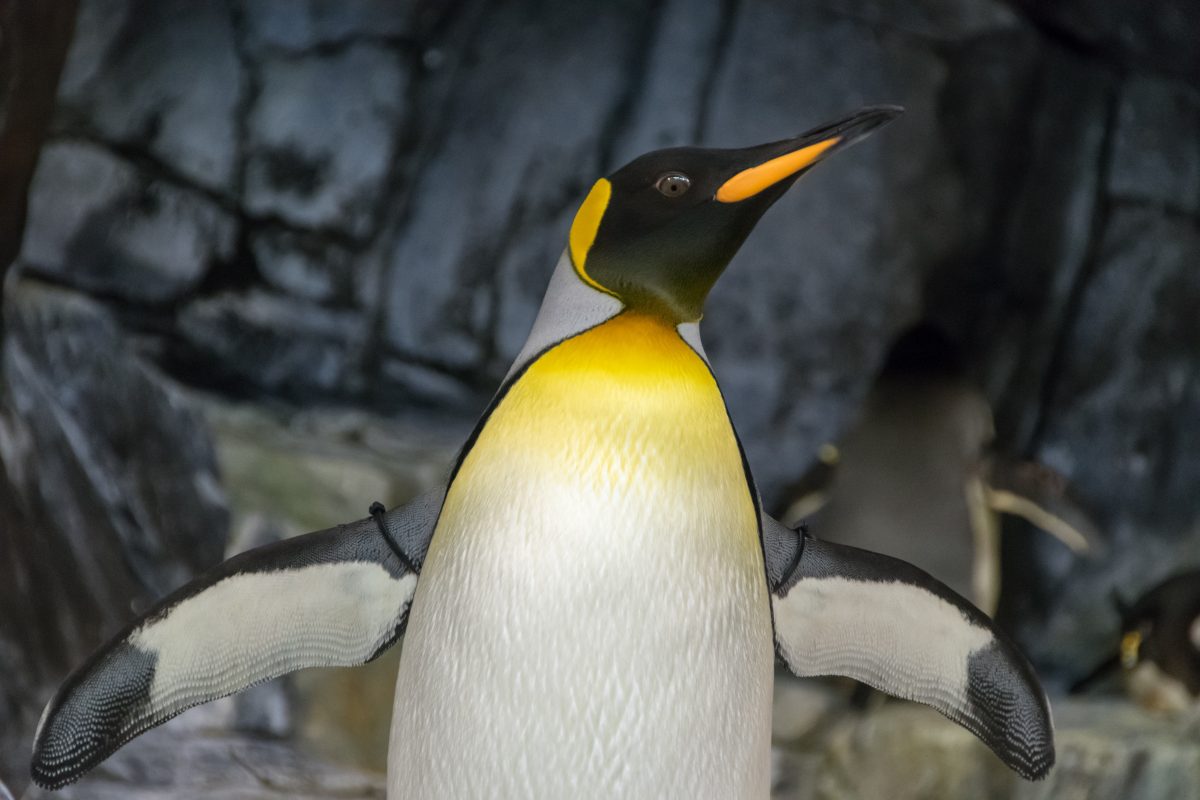There’s no doubt about it: kids are sponges when it comes to learning (and picking up on swear words, turns out). We’ve rounded up some fun facts for kids that will entertain and wow them (and you!). For those in search of trivia for teens, we’ve got you covered as well! Try to stump your kids at the dinner table or go all in for a family trivia night. In the mood for even more fun? Try out these hilarious jokes for kids, the best minute to win it games, and some selections from the 100+ movies every kid needs to see before they grow up.
Fun Facts for Kids About Space
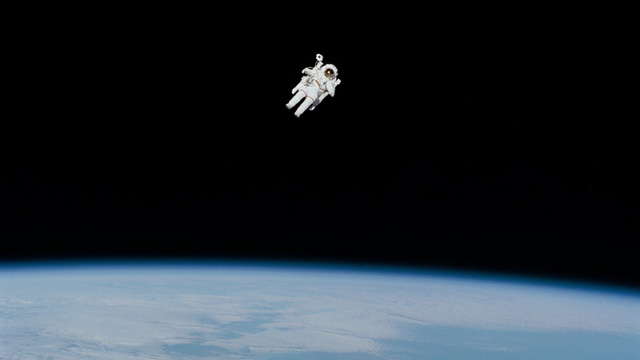
1. The moon is very hot (224 degrees Fahrenheit, average) during the day but very cold (-243 degrees average) at night.
2. Venus spins clockwise. It’s the only planet that does!
3. One teaspoon of a neutron star would weigh six billion tons.
4. Sally Ride was the first American woman to fly in space, on June 18, 1983.
5. One million Earths could fit inside the sun!
6. Even in an airplane, a trip to Pluto would take about 800 years.
7. Ham the Astrochimp was the first hominid in space, launched on Jan. 31, 1961.
8. Neptune’s days are 16 hours long.
9. It takes eight minutes and 19 seconds for light to travel from the sun to Earth.
10. The footprints on the moon will be there for 100 million years.
11. A neutron star can spin 600 times in one second.
12. Jupiter is the fastest-spinning planet in the solar system (it only takes about 10 hours to complete a full rotation on its axis).
13. Sound does not carry in space.
14. The Earth's core is as hot as the surface of the sun.
15. The very first animals in space were fruit flies...they were sent up in 1947 and recovered alive.
16. In 2011, ten-year-old Kathryn Aurora Gray discovered a supernova (a star that has run out of energy, explodes and then collapses before it dies) that no one else had seen before.
17. Europa, one of Jupiter's moons, has saltwater geysers that are 20x taller than Mt. Everest.
18. Saturn's rings are made from trillions of chunks of orbiting ice.
19. Alpha Centauri isn't a star, but a star system. It is 4.22 light years away.
20. One day on Venus is almost 8 months on Earth.
21. Jupiter's Great Red Spot is a storm that has been raging for over 200 years.
22. There are more stars in the universe than grains of sand on Earth.
Looking for more space facts? Check them out here.
Facts for Kids About Food

1. The world’s longest French fry is 34 inches long.
2. Garlic bulbs are full of Vitamin C, iron, potassium, magnesium, zinc, and more. It also has 17 amino acids.
3. On the South Atlantic island of Tristan da Cunha, potatoes were once used as currency.
4. The strawberry is the only fruit that bears seeds on the outside.
5. According to Tori Avey, coffee became a popular drink in America after the Boston Tea Party of 1773: Making the switch from tea to coffee was considered a patriotic duty.
6. The double coconut palm produced the biggest seed in the world: 45 pounds.
7. Ice cream was once called “cream ice.”
8. Pound cake is so-called because the recipes once called for a pound of butter, a pound of sugar, a pound of eggs, and a pound of flour.
9. Peanuts aren't nuts! (They're legumes.)
10. Carrots weren't always orange: they were once exclusively purple.
11. Cherries are a member of the rose family (Rosaceae) as are quince, pears, plums, apples, peaches, and raspberries!
12. Lima beans have an amazing ability to command wasps as a defense. If insects are eating the lima bean's leaves, the plant gives off a substance that acts as a signal to parasitic wasps to swoop in and destroy their enemy (i.e. the leaf-eating insects).
13. Apples float because they are one-quarter air!
14. Ripe cranberries will bounce like a ball. (Go on, try it!). They also float.
15. German chocolate cake is not from Germany. German is the last name of the man who invented a kind of baking chocolate (Sam German).
16. Cilantro and coriander are considered to be the same.
17. SPAM is a mash-up of the words "spice" and "ham."
Amazing Facts for Students About History

1. The Wright Brothers only flew together once (though both piloted the planes individually): on May 25, 1910, they took a six-minute flight piloted by Orville with Wilbur as his passenger.
2. Regardless of their size, naval tradition declares submarines to be called “boats” rather than “ships.”
3. Hedy Lamar was a famous Hollywood film actress who also invented what became modern-day Wi-Fi.
4. Walt Disney started sketching regularly when he was just four years old.
5. Abraham Lincoln lost five separate elections before he became president of the U.S. (Never, ever, ever give up!)
6. Pablo Picasso entered art school around the age of 10. The Picasso Museum in Barcelona, Spain includes many “early works” from his childhood.
7. Frederick Douglass taught himself to read and write.
8. Before European contact (which caused populations to diminish rapidly ) California indigenous tribal groups spoke more than 200 unique dialects.
9. Amelia Earhart first saw a plane at the age of 10 but didn't take an airplane ride until 1920 when she was 23 years old.
10. Abe Lincoln was a professional wrestler long before he became the 16th President of the United States.
11. After landing in Ireland after her first solo Atlantic flight, a farmer asked Amelia Earhart where she was from. When she said America, he almost didn't believe her!
12. Frederick Douglass's birth name was Frederick Augustus Washington Bailey. When he married he chose the last name Douglass after the hero clan in Sir Walter Scott's famous poem, Lady of the Lake.
13. Frida Kahlo created 143 paintings. Of these, 55 were self-portraits.
14. Babe Ruth was the first baseball player to hit a home run in the All-Star game, at Chicago’s Comiskey Park in 1933.
15. The Olympics used to award gold medals for art.
16. George Washington didn't chop down a cherry tree.
Fun Facts for Kids About the Weather
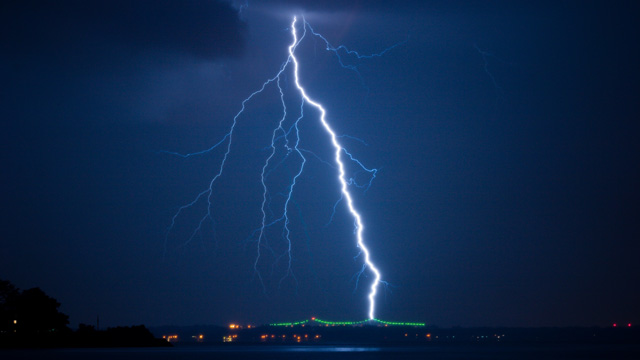
1. Some tornadoes can be faster than Formula One race cars!
2. There are 2,000 thunderstorms on Earth every minute.
3. The wind is silent until it blows against something.
4. There are ice caves in Iceland that have hot springs.
5. The fastest recorded raindrop was 18 mph!
6. The US gets over 1200 tornadoes a year.
7. Lightning can strike twice.
8. Clouds look white because they are reflecting sunlight from above them.
9. Yuma, Arizona gets over 4000 hours of sunshine a year, making it the sunniest place on Earth. The least sunny place is the South Pole, where the sun only shines on 182 days a year. (Which would you rather live in?)
10. Rain contains vitamin B12.
11. A bolt of lightning is five times hotter than the sun.
12. A hurricane releases enough energy in one second to equal that of 10 atomic bombs.
13. It can be too warm to snow, but never too cold.
14. Tropical storms and hurricanes started getting "named" in 1953.
15. You can tell the weather by counting a cricket's chirps!
16. Worms wiggle up from the ground when a flood is coming.
Animal Trivia for Kids
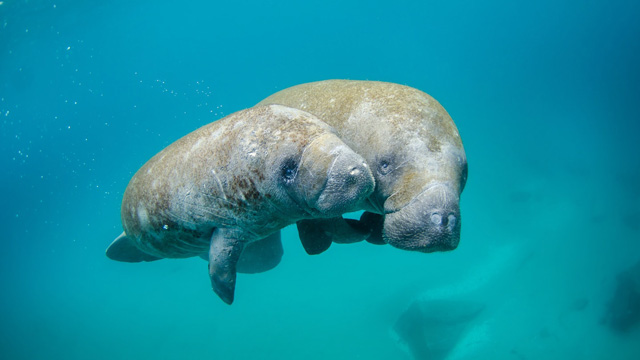
1. Many people believe that early mermaid sightings can be attributed to dehydration + manatees.
2. Sloths cannot shiver to stay warm, and so have difficulty maintaining their body temperature on rainy days.
3. In the wild, some reindeer travel more than 3000 miles in a single year.
4. Only half of the dolphin’s brain goes to sleep when asleep and the other half stays awake.
5. Other than humans, emperor penguins are the only warm-blooded animals to stay in Antarctica for the winter.
6. The biggest fossil of a spider was found in China. It is one inch long and 165 million years old.
7. The largest living animal is the blue whale, which can measure as much as 100 feet.
8. Nearly 10% of all of a cat's bones are in its tail.
9. In the wintertime reindeer grow their facial hair long enough to cover their mouths, which protects their muzzles when grazing in the snow. Beard-os!
10. Dolphins have been seen wrapping sea sponges around their long snouts to protect them from cuts while foraging for food.
11. Shrimp's hearts are in their heads.
12. While pandas sometimes eat fish or small animals, 99% of their diet is bamboo.
13. An ostrich's eye is bigger than its brain.
14. A fox uses its tail to communicate with other foxes.
15. Dogs have wet noses because they secrete a thin layer of mucus, which helps dogs smell!
16. The female hummingbird builds the world's smallest bird's nest (approximately 1.5 inches in diameter, around the size of a walnut!). She weaves it from spiderwebs which allows it to expand as the chicks grow.
17. The largest land animal in Antarctica is an insect: the columbola (which looks like an earwig). Penguins are considered marine animals.
18. There are 222 owl species in the world. Most are nocturnal, but a few are active during the daytime, such as the Barred Owl.
19. Sloths are strong swimmers, especially good at the backstroke.
20. Sharks do not hunt humans or consider humans food. Shark incidents occur when sharks are hunting for seals, dolphins, or other "human-sized" prey. It's a case of mistaken identity!
21. A koala's fingerprints are so similar to human fingerprints that they could taint a crime scene.
22. The loudest animal in the world is the Pistol Shrimp. It can collapse its jaws so fast that creates a bubble that collapses and creates a sonic blast.
Sports Trivia for Kids

1. In 1962, Wilt Chamberlain scored 100 points in a single NBA basketball game. No one has broken this record (not even Steph Curry!).
2. Babe Ruth began his career as a pitcher: Ruth was both a left-handed pitcher and a left-handed batter.
3. The record for the long jump is held by Mike Powell: 29 ft. + 4 inches. That’s like jumping the length of two minivans!
4. The most medals won for Olympic basketball (male or female) are both held by women: Teresa Edwards and Lisa Leslie with four gold medals each.
5. Wilma Rudolph (who set the world record in 1960 for 100, 200, and 4x100-meter relay) had polio, scarlet fever, and pneumonia as a child, leading doctors to believe she’d never walk again.
6. NFL Super Bowl referees also get Super Bowl rings.
7. In 1919, Cleveland Indians pitcher Ray Caldwell was struck by lightning in the middle of the 9th inning. He kept playing!
8. The 'G' on the Green Bay Packers helmet stands for "greatness" not Green Bay!
9. Baseballs last an average of seven pitches.
10. Manon Rheaume is the only woman to have played in an NHL game.
11. Golf is one of only two sports ever played on the moon. In 1971, Alan Shepard hit a ball with a six-iron while on the moon as part of the Apollo 14 mission. The other sport was a javelin toss, during the same visit.
12. The shortest player in the National Hockey League (NHL) was goaltender Roy Waters who measured 5 ft. 3 in. tall.
13. The tallest player in the NHL is Zdeno Chara, who is 6 ft. 9 in. tall.
Fun Facts for Kids About the Human Body

1. The nose can detect a trillion smells!
2. One-quarter of your bones are in your feet.
3. Human teeth are as strong as shark teeth!
4. Your blood is as salty as the ocean.
5. Not only does everyone have unique fingerprints, but humans also have unique tongue prints!
6. The average brain weighs about three pounds. A newborn brain weighs about 3/4 of a pound.
7. Your nose and ears never stop growing.
8. A human body contains almost 100 trillion cells.
9. Fingernails can grow 4x faster than toenails.
10. Eyelashes live for about 150 days before falling out.
11. Humans are the only animals with chins.
12. You can't breathe and swallow at the same time.






